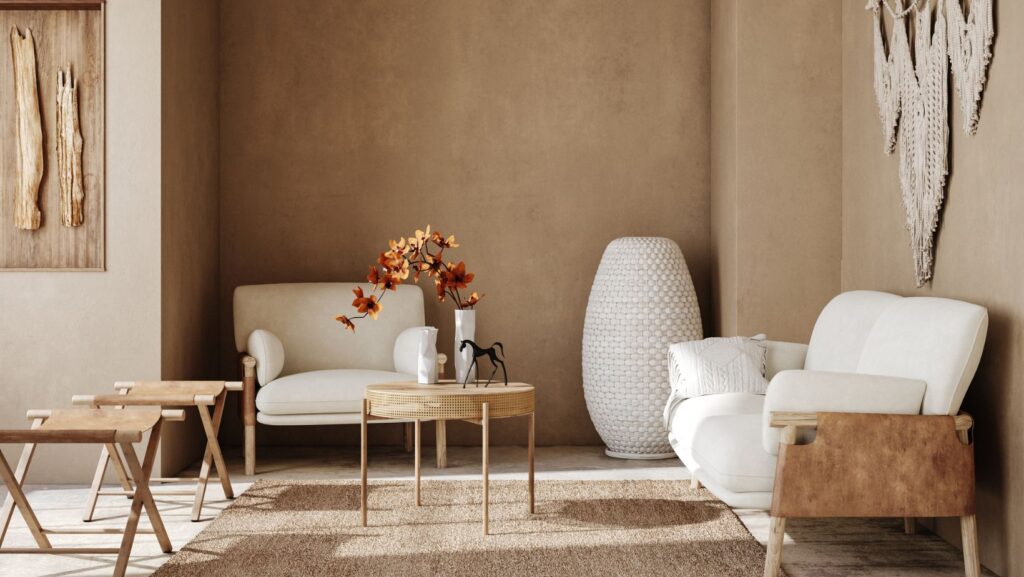Mixing wood tones in your home can elevate your interior design from average to extraordinary. However, achieving the right balance can be challenging. The key lies in understanding how to blend different wood finishes to create a cohesive and stylish look that doesn’t overwhelm the space.
Why Mix Wood Tones?
Blending different wood tones brings depth, warmth, and character to a space. Unlike a monotonous, single-tone wood finish, mixing wood tones adds visual interest and helps in creating a layered, sophisticated look. It reflects a more natural and lived-in environment, akin to what you might find in nature, where no two pieces of wood are identical. Moreover, mixing wood tones offers flexibility, allowing you to incorporate a variety of wood furniture and accessories without being constrained to one finish.
How to Mix Wood Tones Successfully
Start with a Dominant Wood Tone: Begin by selecting a dominant wood tone that will anchor the room. This could be through solid wooden floors, a large piece of furniture, or built-in cabinetry. The dominant tone should set the stage for the room’s overall palette and serve as a reference point for introducing other wood tones.

Consider Undertones: Wood has undertones that can be warm (reds, yellows) or cool (greys, blues). Mixing woods with similar undertones creates a more harmonious look. For example, pair walnut (which has a warm undertone) with cherry or oak. Conversely, blending woods with conflicting undertones (e.g., a cool ash with a warm mahogany) can make the space feel disjointed. If you do choose to mix undertones, ensure there’s a good reason – such as a contrasting piece of furniture or an accent – that ties the room together.
Balance Light and Dark Woods: Mixing light and dark wood tones can create a dynamic contrast that adds visual interest to a space. However, balance is key. If you have a room dominated by dark hardwoods, lighten it up with a few pieces of lighter wood furniture or accessories, and vice versa. This prevents the space from feeling too heavy or too light and gives it a balanced, well-thought-out look.
Use Transition Pieces: Transition pieces are crucial when mixing wood tones. Rugs, textiles, or even pieces of furniture that combine multiple wood finishes can help bridge the gap between different tones. For instance, a coffee table that combines a walnut top with an oak base can seamlessly tie together other walnut and oak pieces in the room. Transition pieces act as mediators, softening the contrast between different wood tones and making the mix feel intentional.
Incorporate Other Materials: Mixing wood tones doesn’t mean your space should be all wood. Incorporate other materials like metal, glass, stone, or upholstery to break up the wood and add texture and contrast. A metal lamp, a glass coffee table, or a stone countertop can provide a visual respite and prevent the room from feeling too heavy with the amount of wood used.
Repeat Tones for Cohesion: To avoid a chaotic look, repeat each wood tone at least twice in the room. This repetition creates a rhythm and reinforces the idea that the mix of wood tones is intentional. For example, if you have a dark wood dining table, consider dark wood picture frames or a chair with dark wood legs to echo that tone elsewhere in the room.

Mind the Scale and Proportion: The scale and proportion of wood tones should be considered to maintain visual balance. Larger pieces of furniture with a particular wood tone will dominate the space, so balance them with smaller items in complementary wood tones. This ensures that no single wood tone overpowers the room and helps in creating a cohesive look.
Final Thoughts
Mixing wood tones in your home is more art than science, but by following these guidelines, you can create a space that feels cohesive, balanced, and full of character. Remember to start with a dominant wood tone, pay attention to undertones, balance light, and dark woods, use transition pieces, incorporate other materials, and repeat tones for cohesion. With these tips, you can confidently mix wood tones to create a stylish and inviting home that reflects your personal taste.
Mixing wood tones may seem daunting at first, but it’s all about experimenting and finding what works best for your space. Don’t be afraid to try different combinations – sometimes, the most unexpected pairings result in the most beautiful designs.
